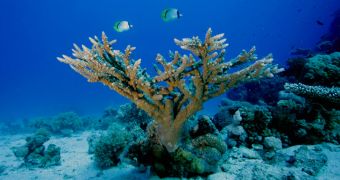Here's a piece of news that'll probably cheer up those who feel like it's been ages since they last went on a date: several bacteria species living beneath the sea floor reproduce once every 10,000 years.
As Live Science points out, this basically means that their parents inhabited our oceans long before humans figured out what's what and started recording their history.
The same source tells us that these bacteria can be found some 1.5 miles (2.5 kilometers) below the sea floor, together with viruses and fungi.
They live in rocks, and a sample no bigger than a teaspoon contains about 10,000 of them.
Seeing how a similar sample collected on the Earth's surface typically contains several billion bacteria, some might think these deep-sea dwellers are fairly lonely. However, they don't seem to mind the solitude.
Due to the fact that they take this long to reproduce, some have argued that these bacteria do not even count as life forms. At least, not in the conventional sense.

 14 DAY TRIAL //
14 DAY TRIAL //